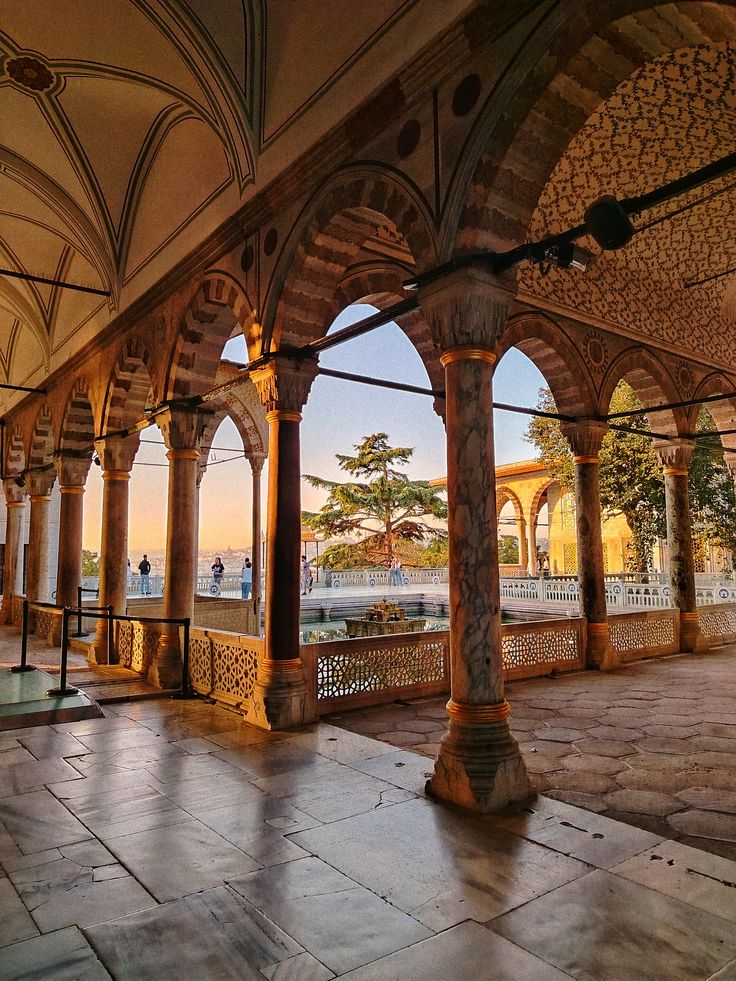Topkapi Palace, Turkey: A Jewel of the Ottoman Empire
Located in the heart of Istanbul, Topkapi Palace stands as one of the most historically and culturally significant landmarks in Turkey. Serving as the administrative center and royal residence for the Ottoman sultans for almost 400 years, this extraordinary palace is not only a masterpiece of Ottoman architecture but also a symbol of the empire’s vast power and influence. Let’s explore the fascinating history, significance, and key facts about Topkapi Palace.
History of Topkapi Palace
The construction of Topkapi Palace began in 1459, shortly after Sultan Mehmed II’s conquest of Constantinople (modern-day Istanbul) in 1453. It was initially designed to be a royal residence and an administrative center for the sultan. The palace is strategically located on the Seraglio Point, providing stunning views of the Bosporus, the Golden Horn, and the Sea of Marmara, symbolizing the empire’s dominance over these vital waterways.
The palace complex grew over the centuries as successive sultans added new wings and rooms. By the 16th century, under the reign of Sultan Suleiman the Magnificent, the palace reached its peak in terms of both size and grandeur. At its height, it housed thousands of people, including the sultan’s family, courtiers, administrators, and military personnel. The complex housed the imperial harem, the sultan’s treasury, and a vast collection of artifacts, all of which reflected the wealth and power of the Ottoman Empire.
After the fall of the Ottoman Empire, Topkapi Palace ceased to serve as the royal residence in 1924, when Turkey became a republic. It was later transformed into a museum, allowing the public to experience its historical and cultural treasures.
Significance of Topkapi Palace
Topkapi Palace holds immense significance in both Turkish history and world heritage. As the home of the Ottoman sultans for nearly 400 years, it played a crucial role in shaping the political, cultural, and military life of the empire. Here are some of the key aspects of the palace’s significance:
- Ottoman Power Center: The palace served as the political center of the Ottoman Empire, where important state decisions were made, treaties signed, and military strategies planned. It housed the Imperial Divan, where the sultan and his advisors met to discuss matters of state.
- Cultural and Religious Symbolism: The palace is also home to numerous religious artifacts, including relics believed to have belonged to the Prophet Muhammad, as well as sacred texts and calligraphy. It reflects the Ottoman’s commitment to Islam and their role as the protectors of the faith.
- Architectural Masterpiece: The palace is an outstanding example of Ottoman architecture, with its ornate courtyards, delicate tile work, and grand halls. The combination of Islamic, Byzantine, and Persian architectural influences makes Topkapi Palace a unique masterpiece.
- Harem and Royal Life: One of the most fascinating aspects of the palace is the Imperial Harem, the private quarters where the sultan’s wives, concubines, and children lived. The harem was a place of intrigue, power struggles, and complex politics within the royal family, offering a glimpse into the inner workings of Ottoman imperial life.
Key Facts About Topkapi Palace
- Architectural Design: Topkapi Palace is a sprawling complex with four main courtyards, each serving a different function. The outer courtyards were used for administrative tasks, while the inner courtyards housed the sultan’s private chambers, the harem, and the treasury.
- The Treasury: One of the most famous features of Topkapi Palace is its Treasury, which contains some of the most valuable treasures of the Ottoman Empire. These include the famous Topkapi Dagger, the Spoonmaker’s Diamond, and a collection of imperial robes, weapons, and jewels.
- The Harem: The Imperial Harem is one of the most intriguing parts of the palace. This section of the palace housed the sultan’s wives, concubines, and children, as well as numerous servants and guards. The harem was a secretive and highly controlled part of the palace, with its own hierarchy and politics.
- The Sacred Relics: Topkapi Palace is home to an impressive collection of religious relics including items believed to be connected to Prophet Muhammad, such as his sword, cloak, and a strand of his hair. These sacred artifacts are housed in the Sacred Relics Room, a place of great reverence for Muslims.
- The Imperial Kitchen: The Imperial Kitchen of Topkapi Palace was one of the largest in the world during its time, capable of feeding thousands of people. Today, the kitchen showcases a stunning collection of ceramics, utensils, and other items that were used by the royal family.
- The Library of Ahmet III: The palace is also home to the Library of Ahmet III, a beautiful space housing a collection of manuscripts, books, and scientific instruments. It was built in the 18th century and is a perfect example of Ottoman scholarly life.
- Museum of Topkapi Palace: Since its transformation into a museum, the palace has become one of Turkey’s top tourist attractions. Visitors can explore the lavish rooms, courtyards, and galleries while learning about the history of the Ottoman Empire through exhibits and displays.
- UNESCO World Heritage Site: Topkapi Palace, along with the historic areas of Istanbul, was designated as a UNESCO World Heritage Site in 1985. It is one of the most visited museums in Turkey, drawing millions of tourists each year.
Impact on Society
The transformation of Topkapi Palace into a museum has played a significant role in preserving Ottoman history and culture. As one of the world’s largest and most important museums, it attracts tourists, scholars, and history enthusiasts from around the globe. The palace has also become a symbol of Turkey’s rich cultural heritage and its connection to the Ottoman Empire.
For the Turkish people, Topkapi Palace represents a link to their past and a reflection of the grandeur of the empire that once ruled vast swaths of Europe, Asia, and Africa. It serves as a reminder of the empire’s contributions to art, architecture, and diplomacy.
Conclusion: A Monument to Ottoman Glory
Topkapi Palace is much more than just a historic building—it is a living symbol of the Ottoman Empire’s splendor and influence. Its architectural beauty, vast treasures, and fascinating history make it one of the world’s most important historical sites. Whether you’re a history lover, an art enthusiast, or someone fascinated by royal life, Topkapi Palace offers an unparalleled glimpse into the heart of Ottoman imperial power.
Today, it remains an enduring testament to the cultural legacy of the Ottoman sultans and a must-visit landmark in Turkey’s vibrant capital, Istanbul.










